Trainability is an important factor to bear in mind while looking for the right dog breed to adopt.
As you might already know, dog breeds differ in intelligence, temperament, and sociability; the key aspects that determine how trainable a dog is. So, if you’re seeking to adopt a Belgian Malinois, it’s natural to find yourself wondering how easy it is to train this dog breed.
But are Belgian Malinois hard to train or is training these dogs a hassle-free experience?
Belgian Malinois are relatively easy to train compared to many dog breeds. That’s primarily because this dog breed possesses an abundance of the factors that naturally make dogs trainable, including smartness, obedience, sociability, and a great temperament.
The Belgian Malinois can learn in days commands that could take other dog breeds months to master. And the best part is that these dogs have a fairly retentive memory and can remember commands from years back.
But as you may expect, there are several things to know before training your Belgian Malinois. Note that while this dog breed is reasonably trainable, your approach to training may make a huge difference. You want to get things right from the get-go. Otherwise, you’ll only end up feeling frustrated when your Belgian Malinois doesn’t seem to learn faster than you thought he would.
Read on for invaluable insights into training the Belgian Malinois. Some of the areas the post shall address include the best practices when training the Belgian Malinois, mistakes to avoid, and common types of training to impart on this dog breed.
But first things first.
More About the Belgian Malinois
The Belgian Malinois boasts a rich history and legacy. It’s one of the four Belgian Shepherd dogs named after various Belgium villages – Tervuren, Laekenois, Groenendael, and Malines/Mechelar.
The breed traces its origin in northwestern Belgium around the city of Malines, where it was originally bred for herding.
Belgian Malinois looks a lot more like the German Shepherd. However, these dogs are two distinct breeds altogether.
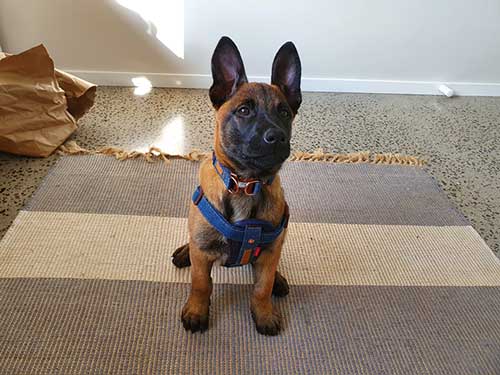
The Belgian Malinois registered its first spike in popularity around the 1880s. The breed, along with the German Shepherd, French Shepherd, and Dutch Shepherd, were christened the “continental Shepherd dogs.” In fact, the four breeds even had a club in their name.
The Belgian Malinois maintained a long streak of popularity in the early 20th century after the breed was introduced in America in 1911.
However, the outbreak of the Second World War disrupted the importation of Mals into the United States, causing a temporary decline in the dog’s popularity.
In the 1950s, the Belgian Malinois began to feature in the American Kennel Club (AKC) dog shows. The breed was officially registered by the AKC in 1959.
Following successful exhibitions that begin in the 50s, American dog fanciers developed more interest in the Belgian Malinois. The dog’s popularity has been on a consistent incline since then.
Quick Breed Facts
| Breed Name: | Belgian Malinois |
| Nickname: | Mal or Mals |
| Breed Group: | Herding |
| Breed Size: | Large |
| Average Size: | 22 to 26 inches tall (55 to 66 centimeters) |
| Average Weight: | 40 to 80 pounds (18 to 36 kilograms) |
| Lifespan: | 14 to 16 years |
| Coat Color: | Light-yellowish tan to mahogany |
| Coat Fur: | Short coarse fur and a double coat |
| Coat Pattern: | Sable |
| Temperament: | Gentle, hardworking, and confident |
| Intelligence: | High |
| Socialization: | Highly social among familiar faces but wary of strangers |
| Guard Dog: | Yes |
| Best For: | Active families with older children; can be problematic around young kids |
| First Time Dog Owners: | No, Best Suited for Experienced Dog Owners |
| Territoriality: | Fiercely territorial |
| Prey Drive: | High prey drive |
| Shedding: | Seasonal shedder |
| Grooming: | Easy to groom |
| Barking Levels: | High but only when agitated |
| Destructive Tendencies: | Chews a lot |
| Activity Levels: | Requires at least 90 minutes of exercise split over multiple sessions per day |
| Trainability: | Easy to train |
| Weather Tolerance: | Cold – and hot – weather tolerant |
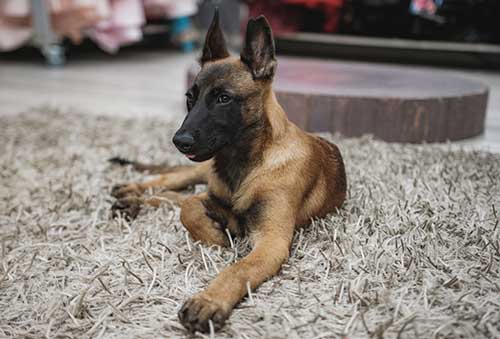
Physical Characteristics
The Belgian Malinois is a large dog breed that nearly resembles the German Shepherd. The dog averages 22 to 26 inches in height and weighs between 40 and 80 pounds.
But as with any dog breed, a Belgian Malinois’ actual size and weight depends on the dog’s diet, lifestyle, and gender. To ensure your Belgian Malinois reaches its optimal size, it’s crucial to pay attention to factors such as what to feed your Belgian Malinois, as well as their overall health and wellness. Well-fed dogs with minimal health issues can grow to be fairly large, and this applies to male Mals as well.
Belgian Malinois are sturdy dogs of square proportion. Their bones are moderately heavy but oval.
Although their bodies are packed with muscle, Mals sport an elegant appearance. The dogs stand out for their smooth and easy gait. Their walking postures appear more gentle than hard-driving, which gives the overall impression of tirelessness.
Belgian Malinois tend to run in circles as opposed to a straight line.
In terms of coat appearance, Mals have a fairly short fur with a dense undercoat. Their coats feature a sable pattern and a range of colors, from shades of fawn to mahogany.
Belgian Malinois can leave for up to 16 years. Again, this depends on the dog’s lifestyle and overall health condition.
How Trainable Are Belgian Malinois?
Temperament, along with intelligence and sociability, are the key considerations when determining a dog’s trainability.
1. Temperament
Belgian Malinois are vigilant dogs. They’re excellent at maintaining situational awareness. Therefore, these dogs can make perfect police and guard dogs.
Belgian Malinois are also clever and hardworking. They can be so calm and gentle around familiar faces. But due to their alertness, these dogs can get uncomfortable and even aggressive around strangers.
The Belgian Malinois also likes to hang around people. Locking the dog up in kennels can easily get him agitated.
Like most large dog breeds, the Belgian Malinois is a highly territorial dog. Coupled by his strong prey drive, the dog will stop at nothing to fend off potential intruders.
Last but not least, Belgian Malinois have high energy levels. This is another crucial aspect that makes them trainable. You can easily prolong the training sessions without worrying about the dog getting too exhausted.
2. Intelligence
The Belgian Malinois is exceptionally smart. So much that many dog owners have given them a score of 5 out of 5 on the intelligence scale.
Overall, Mals are ranked the 26th smartest dogs out of 138 breeds.
Their smartness, along with their strong willpower and work ethic, makes Belgian Malinois highly trainable.
View this post on InstagramA post shared by Springsteen Zazou OfNiniekWish (@zazou_belgianmalinois)
3. Sociability
Belgian Malinois are highly sociable. That’s mainly due to their tendency to hang around people and other dogs.
Of course, you’ll need to get them socialized at an early age to prevent them from becoming inherently aggressive.
Once socialized, it’s recommended to raise Belgian Malinois in large families where they can constantly be around other household members even while you’re away. Otherwise, the dog may develop separation anxiety and take to destructive behavior like excessively chewing on your furniture.
Belgian Malinois Training Guide
As we’ve already mentioned and reiterated throughout this post, the Belgian Malinois is super easy to train. The breed’s remarkable intelligence, sociability, and high energy levels make Mals naturally motivated to be trained. The dogs are also highly obedient and are inherently inclined to listen and obey commands.
But as with any dog breed, there are several training tips to implement to succeed in training your Belgian Malinois.
First up, it’s important to emphasize the importance of early socialization. That’s because Belgian Malinois were bred for herding. Therefore, these dogs have a strong prey drive. Their first instincts will be to chase anything that moves in order to track them down and “herd” them.
Without early socialization, training your Belgian Malinois might turn out to be a laborious experience. Worse yet, poorly socialized dogs tend to be dangerous around young kids, strangers, and other pets.
View this post on InstagramA post shared by Springsteen Zazou OfNiniekWish (@zazou_belgianmalinois)
What Is The Best Time to Start Training Your Belgian Malinois?
This is the most pressing question to settle before embarking on any training exercise for your Belgian Malinois (or any other dog for that matter).
As with most breeds, canine experts recommend starting to train your Belgian Malinois as early as the next day after bringing the dog to your home. Early training helps to combat any unhealthy habits that the dog may have picked elsewhere before adoption.
Without training, these habits can get reinforced over time and become difficult to replace. Even worse, other household pets may learn these unwanted habits if the problematic dog isn’t trained early enough.
If the Belgian Malinois was born in your home, it’s best to kick off the training program as soon as the puppy is weaned or when he’s anywhere from 4 to 14 weeks.
What Challenges Will You Encounter While Training Your Belgian Malinois?
Belgian Malinois may be smart dogs. But they also have certain character flaws that might pose a challenge while training them.
For instance, Mals are highly excitable and have a relatively short attention span. This quality makes them easy to distract. So, if training the dog outdoors in a space full of buzzing insects, you’ll experience a bit of a challenge getting him to stay focused.
Another training challenge widely reported by previous Belgian Malinois owners is that of the dog’s short temper.
Scolding your Belgian Malinois while training him is the surest way to end a training session. And depending on how offended the dog is, he may become stubborn and unwilling to follow through with the subsequent training programs. So, whatever you do, avoid scolding your Belgian Malinois. Much less during active training sessions.
Other common challenges you may encounter while training Belgian Malinois include herding behavior, uncontrollable prey drive, and begging for food. The most effective way to solve these problems is to tire the dog down before each training session.
What Are the Common Mistakes to Avoid While Training a Belgian Malinois
The most common mistake while training your Belgian Malinois is expecting impressive results too soon.
Although Mals is incredibly smart and will learn commands faster than most other dogs, you shouldn’t expect him to turn into an overnight genius.
Like all pets, your Belgian Malinois will prefer to learn at his own pace. The fact that you’re training a puppy with limited mental faculties is all the more reason to exercise patience with your Mal.
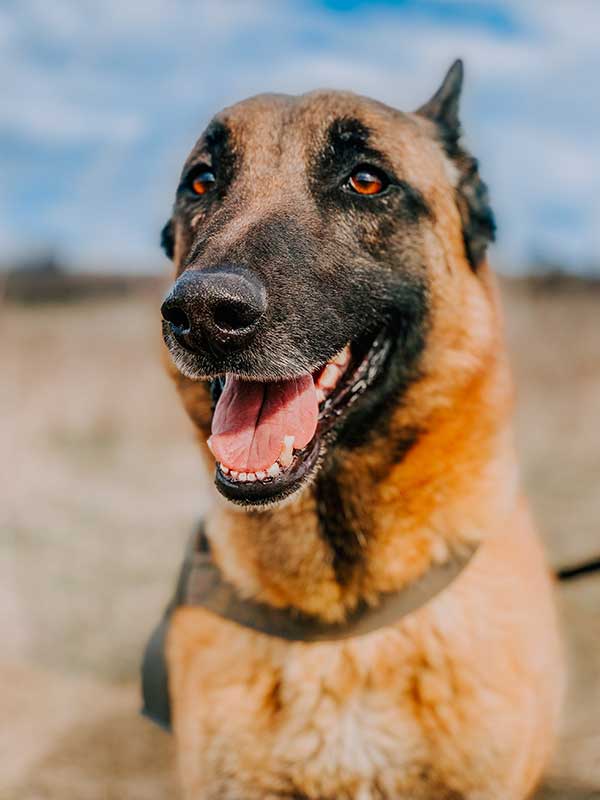
Basic Commands to Teach Your Belgian Malinois
Before you begin any training, it’s best to know the basic commands to teach your Belgian Malinois.
The conventional wisdom is to choose short (typically one-worded) commands. Dogs find it easier to remember short commands than long ones.
The following are easy commands to get you started;
- Sit – Sit or lie down.
- Stand – Get on your feet.
- Stay – Remain in that position; don’t move.
- Come – Pretty much self-explanatory.
- Go – Leave my presence.
- Fetch – Go pick an object and bring it to me.
- Eat/Drink – You won’t always need to use these commands, but it still helps to train your Mal to remember them.
- Stop – Stop whatever you’re doing or planning to do.
Types of Training for Belgian Malinois
1. Foundational Training
Foundational training is basically training aimed at socializing your Belgian Malinois.
As we already mentioned, this kind of training should be done early enough when aberrant behaviors are still easy to unlearn.
The best way to socialize your Belgian Malinois pups is to expose them to different people, places, and situations.
Have your puppy accompany you in public places, such as open-air markets, busy shopping streets, and festivals. You might also consider bringing a variety of people to your home so that your Belgian Malinois pup can interact seamlessly with them.
And while you’re at it, monitor the dog keenly for signs of fear and anxiety. Be sure to calm him down if he feels threatened. That way, the dog will feel easy being around strangers.
Foundational training makes it easy to train a dog even when he’s older.
If you’re not the outdoor tor outgoing type, you can still conduct foundational training by spending more quality time with your Belgian Malinois. These dogs require at least 1.5 hours of stimulating exercise daily, spread across multiple play sessions. But you can start with 30 minutes of play every day if dealing with a young Mal.
2. Potty-training Belgian Malinois Puppies
It’s common knowledge that dogs should be potty-trained while they’re still young. So, potty training is part of the basic foundational training every Belgian Malinois should receive.
But are Belgian Malinois easy to potty train?
Since the Belgian Malinois is relatively smarter and trainable than most dog breeds, it goes that this breed is also fairly easy to potty train.
Here’s a brief guide on how to potty-train a Belgian Malinois;
- Establish a routine so that your puppy understands there are times to eat, play, poo/pee, nap, etc.
- Take your puppy outdoors frequently; preferably immediately they wake up, after eating or drinking, during and after playing, or every two hours.
- Designate a bathroom spot outdoors and take your puppy to this spot regularly while on a leash.
- As your pup relieves himself on the spot, gently but firmly say a word or phrase that you can repeat each time you want them to go.
- Repeat the process until the puppy now associates the selected words with a command to poo or pee.
- Carefully introduce the dog’s litter box into the same outdoor spot and repeat the training.
- Reward the dog whenever he’s able to go in his litter box.
3. Obedience Training
Obedience training is another common training technique that should be done to Belgian Malinois while they’re still young. In fact, it’s almost impossible to succeed in other forms of training if you fail at obedience training. Fortunately, Belgian Malinois are highly obedient dogs.
The following is a short procedure on how to train a Belgian Malinois puppy to be obedient;
i. Select the specific command you wish for your Belgian Malinois puppy to learn.
In this illustration, we will use the “Stop” command.
ii. Have the dog on a leash and go on a walk outdoors.
The idea is to get your dog curious so you can use his curiosity to train him to be obedient.
iii. Wait until the dog engages in an undesirable act, such as barking at a stranger, then shout the “Stop” command.
iv. Repeat until the dog fully understands what the command means while reinforcing every milestone with a treat.
4. Clicker Training
Clicker training is a form of positive reinforcement training using a small mechanical noisemaker.
It’s pretty much similar to other forms of obedience training, except that you now use the clicker instead of shouting the words verbally.
5. Leash Training
Getting your Belgian Malinois to walk on a leash is not exactly a walk in the park. That’s especially considering how agitated these dogs can get.
But if approached with caution, leash training is probably one of the easiest forms of training to teach a Belgian Malinois.
The procedure for leash-training a Belgian Malinois dog unfolds as follows;
- Let the dog wear a harness/collar and a leash inside before venturing outdoors.
- Allow the dog to wear the leash a few hours a day for several days while playing with him and giving him treats if he doesn’t get naughty.
- Once the dog gets used to the leash, introduce him to a sound cue.
- Whenever the dog turns towards you and looks at you after shouting the cue, reward him with a treat.
- Repeat the process a couple of times indoors before taking things outside.
6. Crate Training
It doesn’t matter how infrequently you travel. There will come a time when you need to transport your Belgian Malinois in a crate. That’s when you’ll appreciate the importance of crate training.
Although it’s a bit harder than leash training, crate training largely requires time and patience.
Here’s how to go about crate-training your Belgian Malinois;
- Select a crate.
- Introduce your dog to the crate by placing the crate in an area of the house where the dog spends a lot of time.
- Put a soft towel or blanket inside the crate and bring your Belgian Malinois over to it.
- Shout a command to encourage the dog to enter the crate.
- Repeat until the dog can enter, lie still, and even feed in the crate, rewarding him for every milestone achieved.
- Newly enhanced with added security features to keep your pet safe | Slide-bolt door latches now feature patented Paw Block and locking tips to create…
- Life Stages double door dog crate measures 48L x 30W x 33H inches and is suitable for extra-large dog breeds with an adult weight of 90-110 pounds. If…
- Dog crate includes a divider panel, durable & leak-proof plastic pan, protective rubber feet, carrying handle, and customer support team based in…
Last update on 2024-12-24 / Affiliate links / Images from Amazon Product Advertising API
Frequently Asked Questions
How Long Does It Take To Train A Belgian Malinois?
There’s no standard duration required to train a Belgian Malinois. It depends on a host of factors, including the nature of training, the number of daily sessions, and how consistent your training programs are. But on average, your Belgian Malinois will be able to learn most commands in a few weeks.
Are Belgian Malinois More Difficult To Train Than Other Types Of Dogs?
Belgian Malinois are easier to train than most dog breeds, such as beagles, basset hounds, and rottweilers.
Are Belgian Malinois Good For Beginners?
No. Despite being intelligent and easy to train, these are high energy dogs for the average household, add to that the high prey drive because of their herding background, making them not a good fit for first time dog owners with no experience in dog training
What Are Common Belgian Malinois Health Concerns?
Although they’re relatively a hardy dog breed, Belgian Malinois do sometimes experience hip dysplasia, elbow dysplasia, and eye problems like cataracts and progressive retinal atrophy.
How Much Is A Belgian Malinois?
Purebred Belgian Malinois puppies from reputable breeders will vary between approximately $1,500 and $100,000, depending on the breeder, bloodline, American Kennel Club (AKC) papers, and verifiable family health history.
- RICH FEEDING GAME – Look at the Big Orange Flower in the middle of the snuffle mat dog puzzle toys. Total 4 layers of orange petals can hide large…
- EXTRA FUN ATTRACTS YOUR PUPPY – We are extremely positive of our snuffle mat. But in order to provide more fun for lovely puppies, we set up 4…
- EXCELLENT RELEASE BUCKLE DESIGN – Have you ever bought a snuffle mat for your dog that want to develop good habits in your dog. But your dog likes…
Last update on 2025-01-13 / Affiliate links / Images from Amazon Product Advertising API
Wrap Up
The Belgian Malinois is one of the smartest and most sociable dog breeds. That explains why these dogs are incredibly easy to train too.
Belgian Malinois are generally trainable in a matter of weeks. But as with any dog breed, it takes patience to get your Belgian Malinois to learn all your commands.
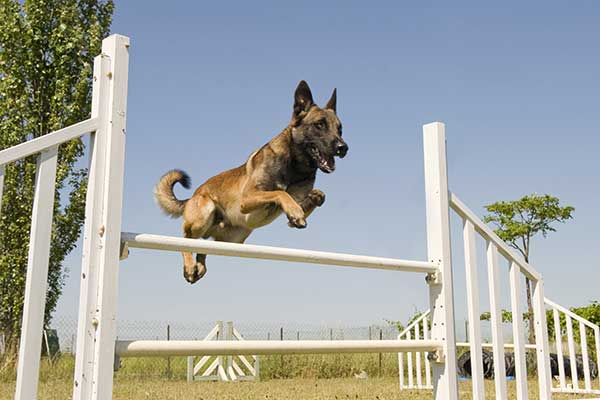
Checkout Our Favorite Dog Products
1. BEST PUPPY TOY
We Like: Snuggle Behavior Toy with Heart Beat & Heat Pack – Ideal toy for new puppies.
2. BEST DOG TRAINING PROGRAM
We Like: Doggy Dan The Online Dog Trainer – Stop any dog problem and raise the perfect puppy with The Online Dog Trainer.
3. BEST DOG PUZZLE TOY
We Like: Outward Hound Interactive Puzzle Toy – Every dog loves chasing squirrels at the park. The Outward Hound Hide-a-Squirrel Puzzle Toy gives your dog the same feeling as though he was outdoors chasing live squirrels.
4. Best Bone Broth for Dogs
We Like: (Solid Gold – Human Grade Bone Broth for Dogs) – Simmered Beef Bone Broth With Turmeric Provides A Nutrient-Dense And Flavorful Addition To Your Dog’s Meal + Rich In Natural Collagen From Beef Bones.
5. Best Multivitamin for Dogs
We Like: PetHonesty 10-For-1 Multivitamin – 10 Benefits in 1 Daily Treat – These Multivitamin Snacks combine a well-rounded blend of the most essential vitamins and supplements including glucosamine, probiotics, vitamins and omegas, for dogs’ overall daily health.

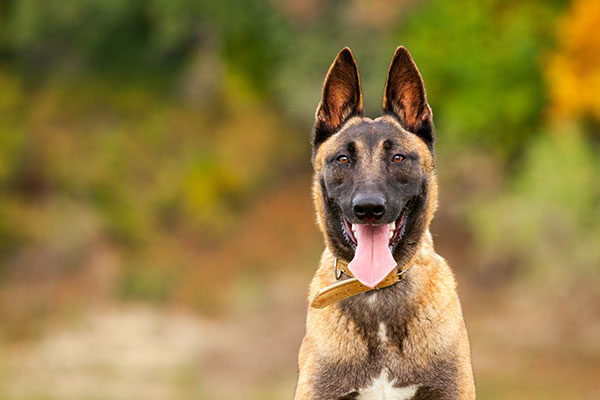

 (@kilo_the_malinois)
(@kilo_the_malinois)


